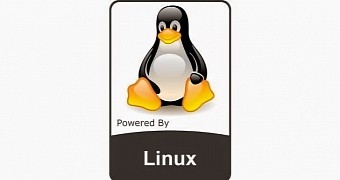Now that you've learned the basics of Linux and the difference between the Linux kernel and a GNU/Linux operating system, and how to use these terms in a conversation with friends or colleagues so that you know what you're talking about, the time has come to continue our free Linux lessons.
The second of the many to come lessons about Linux is here, and today we're going to talk about how a GNU/Linux distribution works. I will try to explain it to you in a way that anyone can understand, even if you don't have too much technical skill. I bet that many of you out there get scared very easily of Linux, as an operating system, mostly because you hear about having to use a terminal emulator a lot.
Sometimes this is true, and many geeks out there love to work in a Terminal app no matter if they're using a GNU/Linux system, Mac OS X, Solaris, FreeBSD, or even the Microsoft Windows operating system. To be honest, I think that using a Terminal to do some things like updating the OS or installing various packages is a pretty cool thing, and you will definitely impress your colleagues if you have some command-line skills.
A GNU/Linux OS works like any other operating system
A GNU/Linux operating system works pretty much like any other operating system. Let's take Windows, for example, because many of you reading this are probably using it right now. You should know by now that any GNU/Linux OS or distribution is powered by a kernel, the Linux kernel. Windows is also powered by a kernel (please read the first lesson to learn how the Linux kernel is built).
Like Windows, a GNU/Linux OS has a bootload, which sometimes is hidden by default and sometimes you see it for a few seconds when you start your computer. The bootloader lets you choose between multiple operating systems you might have installed on your PC or laptop, as well as to perform various administrative tasks, such as to enter recovery mode (just like Windows OSes have).
The thing about Linux is that you are always free to replace its core components. For example, you can choose to install a different bootloader if you want to, one that is more powerful or simpler. The most used and popular bootloader for a GNU/Linux OS is GRUB, but there are many distributions that use Syslinux. Other popular bootloaders are rEFInd and Clover, especially for UEFI (Unified Extensible Firmware Interface) computers.
Besides the bootloader, which starts the Linux kernel and basically your operating system, a GNU/Linux OS consists of daemons (called background services on a Windows operating system) that are used for starting various services during boot, such as sound or printer, and the graphical server (Windows has one too) for starting the desktop environment, which you might have heard of as X11 or X server, or just X.
You are free to customize a GNU/Linux OS the way you see fit
Bottom line, there's nothing special about how a GNU/Linux operating system works, except for the fact that everything is more transparent, and you are always free to customize it the way you see fit. You can replace almost any (if not all) of its core components, including the bootloader, the graphical server, the desktop environment, and even the Linux kernel.
People get scared pretty easily when they hear about Linux, mostly because they don't know how it works and think that it is something out of the ordinary. Well, it is not. It's just more open than, for example, a Windows operating system where everything is closed so that you cannot see how it boots, what services are starting, etc. Next week we will learn more about how to get, boot and use a GNU/Linux distro.

 14 DAY TRIAL //
14 DAY TRIAL //